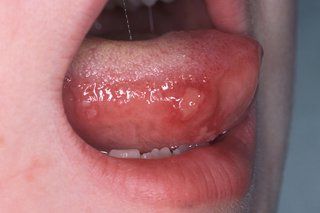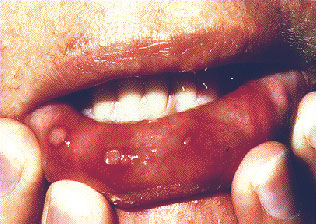
The most common causes of hand and foot disease in the United States are viruses, bacteria, fungi, protozoa, and parasites. All animals do not suffer from diseases of the hands, foot and mouth disease. However, some animals, such as cats and dogs, do this.
According to the Centers for Disease Control and Prevention (CDC), in the United States, more than one third of the country's population is infected with animal pathogens. This percentage is growing every year. The vast majority of people infected with an animal infectious disease show no symptoms. Some may have mild to moderate symptoms, but others may be asymptomatic.
The most common pathogens that cause infections in humans are viruses, bacteria and fungi. However, the symptoms of most types of diseases of the hands, buttocks, and mouth are similar to those of other viral diseases. Common signs and symptoms include:
- Diarrhea. There are several causes of diarrhea in humans. Diarrhea initially occurs after the onset of an infectious disease. As the disease progresses, the diarrhea becomes more severe, with blood in the stools and vomiting. Fever is another symptom of diarrhea in humans.
- Fever – An infection in humans causes a high fever, sometimes up to 101 degrees Fahrenheit. An infection in a dog or cat often causes a fever at about the same level as a person. Cats and dogs with infections can also experience vomiting and diarrhea. Some of the more serious infections can cause seizures and breathing problems.
- Rash – In case of infection, the hands and feet may itch and irritate the skin. The infection can cause rashes skin lesions, ulcers, redness, swelling, and itching in the mouth. Some of the more serious infections can lead to lesions, blisters, and pus.

These symptoms may be mild or severe, but if left untreated, they can progress rapidly
The sooner an individual contract the disease, the greater the chance of a severe case. Some of the symptoms include:
When an individual is suspected of having the disease, it is important to consult their primary health care provider. or primary care physician to rule out other medical conditions. If there is suspicion that the person might be infected with the foot and mouth virus, tests can be performed to confirm this diagnosis.
A blood test may confirm that the person is infected with the virus. There may be symptoms of a fungal infection, which can also be a sign that a person has contracted the virus. Tests to determine if the person has had contact with a disease-causing animal or insect, such as ticks or mosquitoes, can also confirm a diagnosis of infection.
Treatment of the disease depends on the seriousness of the case. In very serious cases, the patient may need hospitalization. In milder cases, treatment may include dietary and antibiotic supplementation.
There are several natural treatment options for treating the disease. One of these is feeding a good diet, including whole grains and legumes, to the patient. Dogs and cats that are infected should also be putting on a restricted diet of corn or rice to prevent further transmission. If the infection is severe, antibiotics may be used to kill off the infection.
A homeopathic remedy may be used as a preventative measure in many cases. Many people also report that acupuncture and massage are effective in preventing or reducing the severity of symptoms.
This condition, known as "feline distemper", is the third most common cause of death from communicable diseases among dogs and cats. It is spread via direct contact with the saliva of infected animals. Other less common causes of infection include infected animals and by eating contaminated food.